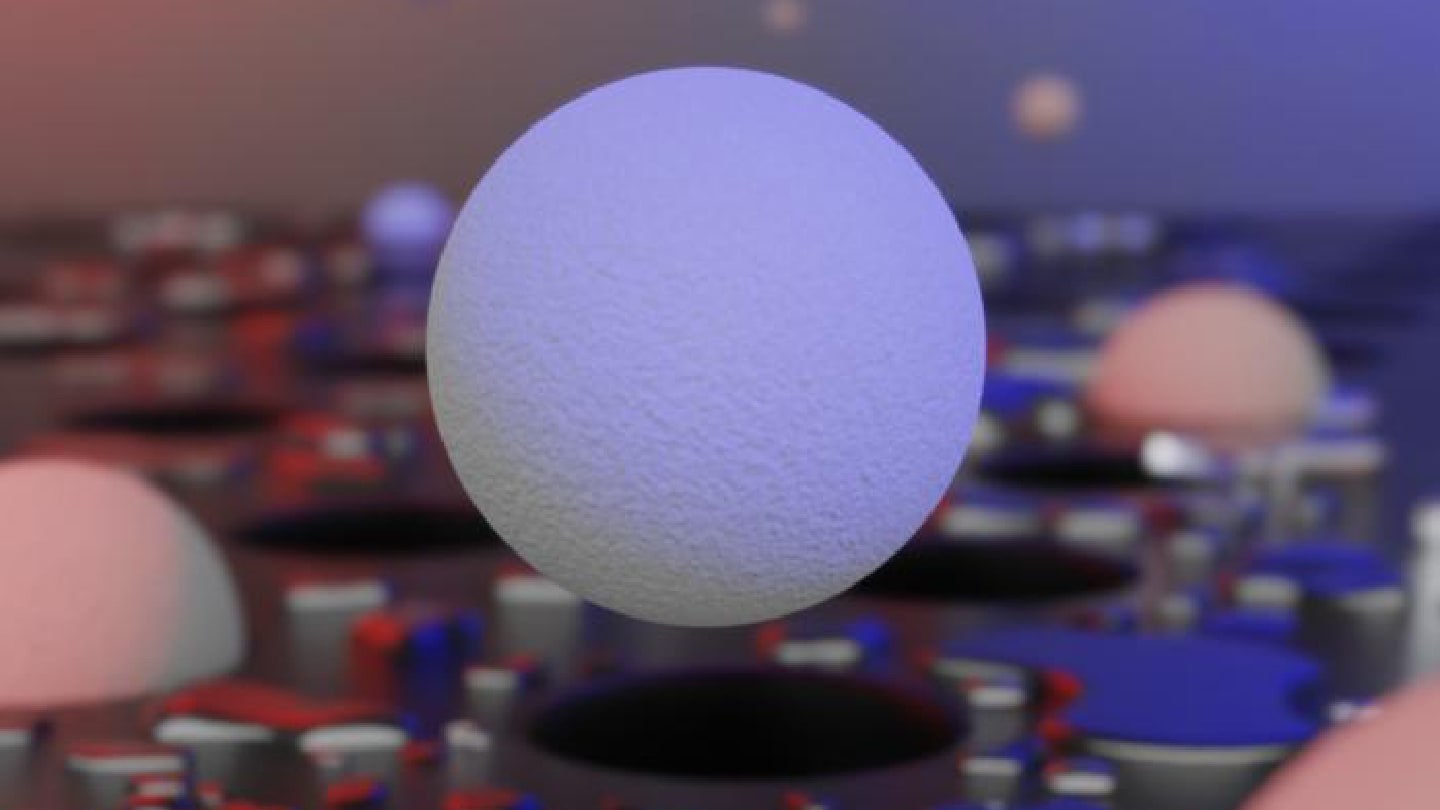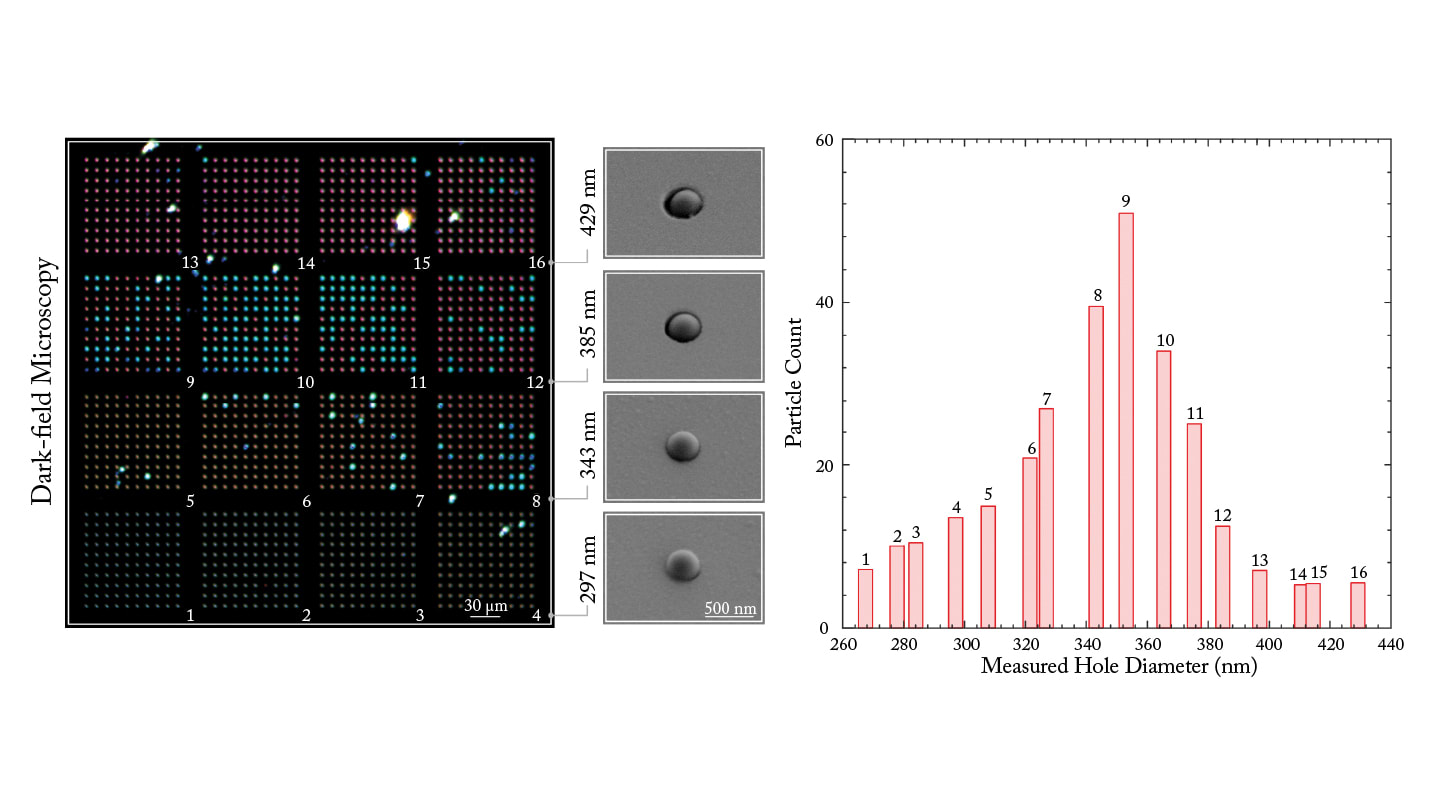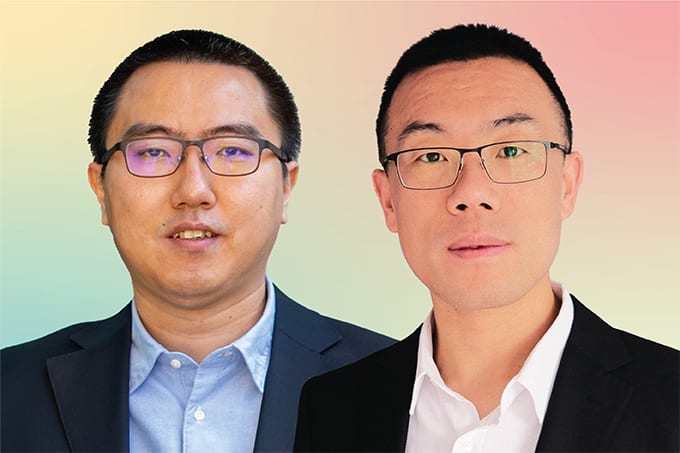
Researchers have developed an “optical sieve” test strip that can detect the size and concentration of nanoplastics in synthesized real-world samples – overcoming the need for costly separation, filtration, characterization techniques.
“The optical sieve works in a simple way, which is what makes the detection method so appealing,” says Dominik Ludescher, PhD student and first author of the study.
The researchers first edge cylindrical hole cavities into a semiconductor substrate. Then, when a liquid containing nanoplastics is deposited onto the optical sieve, the particles remain trapped in holes of matching size – much like a classical sieve – which changes the color observed under the light microscope. By carefully tuning the hole dimensions, the researchers can extract information about the size, distribution, and number of the particles.

The cylindrical hole cavities are known as Mie voids, which were discovered in 2023 – the inspiration for this work, according to Ludescher. “Since the response strongly depends on the refractive index of the materials inside the voids, it was an obvious step to introduce substances into them for detection,” he says. “Naturally, nano- and microplastics came into focus, as they represent a pressing problem for which detection methods are urgently needed.”
Unlike other well-established techniques in nanoplastic research such as dynamic light scattering, the new approach requires no extra or complex instrumentation because only an optical microscope is needed.

The key challenge when developing a method for nanoplastics detection is obtaining reliable and reproducible results in real-world samples. Most environmental nanoplastic studies use synthesized nanospheres as a proxy and, according to the authors, there is little to no available data on actual environmental let alone biological samples.
In their study, the researchers used a “synthesized real-world sample,” which was based on a matrix composed of lake water, sand, and a distribution of different nanoplastic particles.

The team are now closely collaborating with environmental science institutes to obtain more complex and realistic real-world samples. “At present, such samples are not yet available,” says Ludescher. “In general, however, our system is highly robust and can be adapted to varying sample conditions, which gives us confidence that it will also be capable of handling real-world samples. However, samples from rivers and human fluids are particularly challenging, and specific expertise in handling these liquids still needs to be established.”
In the future, the technology could evolve into a portable test strip for fieldwork, or even for clinical use in detecting nanoplastics in human tissue.
“Such a step requires substantial work, particularly in generating highly reliable and reproducible results, as well as advances from various research fields including photonics, chemistry, and environmental science,” says Ludescher. “That said, I believe this technology holds strong potential as a simple field-deployable detection method for obtaining rapid results on micro- and nanoplastic contamination.”





